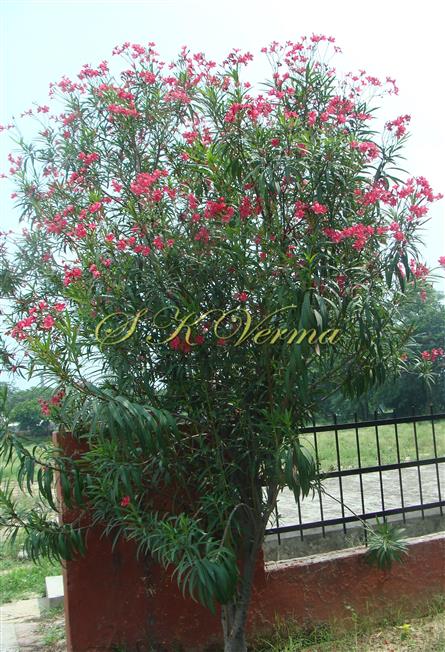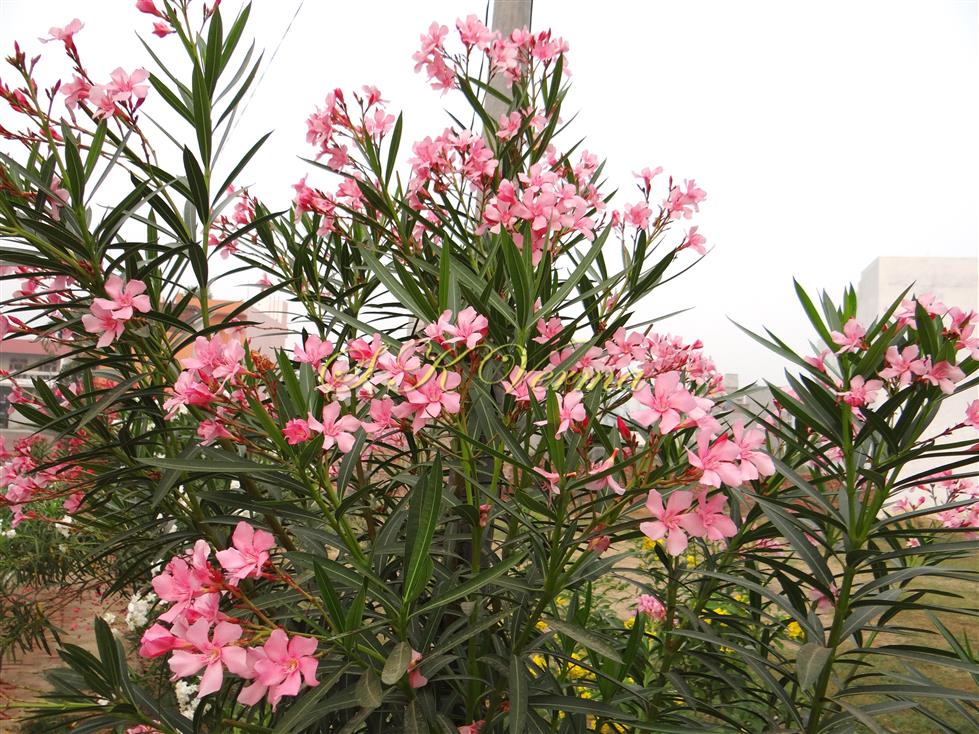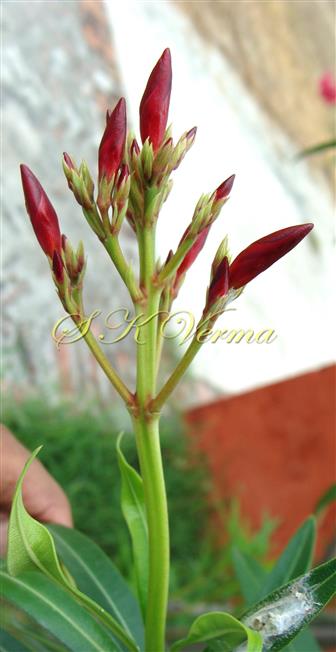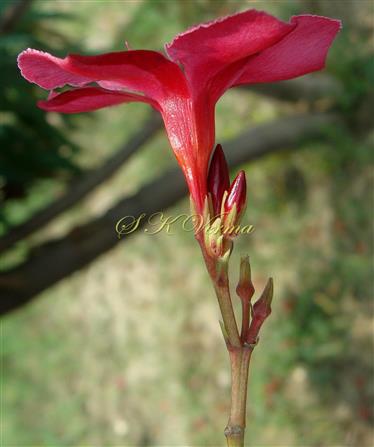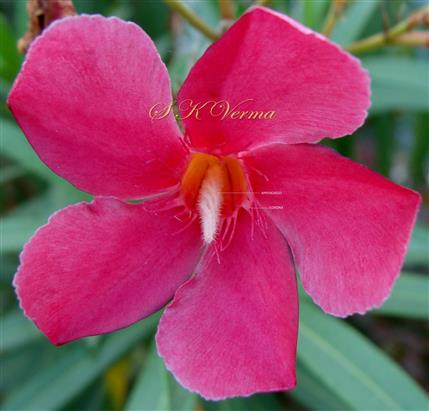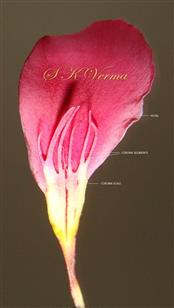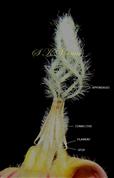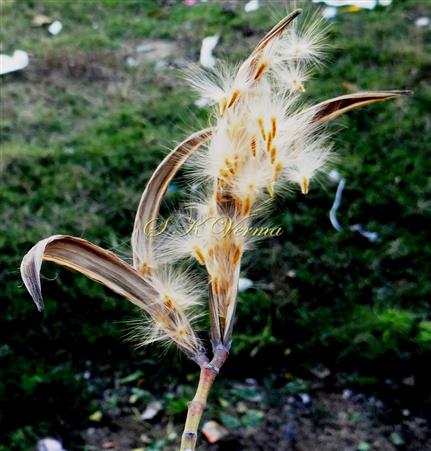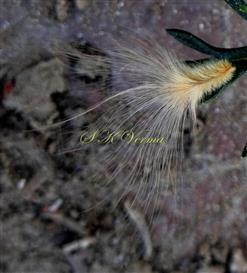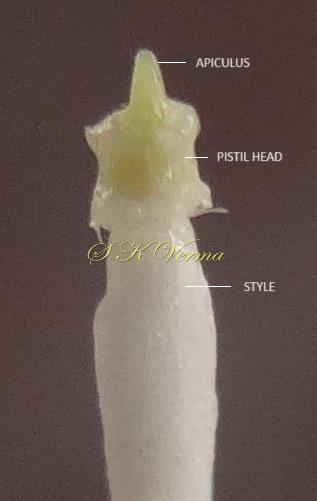NERIUM
Nerium
L., Sp. Pl. 209. 1753; DC., Prodr. 8: 419. 1844; Boiss., Fl. Or. 4: 47. 1879; Hook. f., Fl. Brit. Ind. 3: 654. 1882; Cooke, Fl. Pres. Bomb. 2: 143. 1904; Talbot, For. Fl. Bomb. Pres. Sind 2: 224. 1911; Fl. China @ eFloras.org 16: 173. 1995; Fl. Pak. @ eFloras.org p. 16.
A lactiferous, glabrous shrubs or trees. Leaves whorled arranged in 3-4 rows, rarely opposite, mostly coriaceous, eglandular, with many slender, parallel and narrow lateral veins, midvein prominent abaxially, rarely glandular in the axil. Inflorescence a terminal paniculate corymbose cyme with large to small showy flowers. Calyx lobes 5, narrow, mostly imbricate, slightly unequal with fleshy glands at the base inside. Corolla funnelform with spreading lobes overlapping to right; tube cylindric, short; corona appendages 5, petaloid, laciniate opposite to the lobes. Anthers sagittate, with a bristly filiform apical appendage, pilose, connivent with stigma. Disc absent. Carpels 2, free; ovaries 2, free, ovules many in each ovary; style filiform or thickened above the middle; stigma fusiform. Follicles 2, united until just before dehiscence, more or less stout, vinous. Seeds numerous, densely pilose, coma at truncate apex.
One species
Nerium oleander
Nerium oleander
L., Sp. Pl. 1: 209. 1753; DC., Prodr. 8: 420. 1844; Boiss., Fl. Or. 4: 47. 1879; Stewart, Ann. Cat. Vascular. Pl. W. Pak. and Kashm. 564. 1972; Fl. China @ eFloras.org 16: 173; Fl. Pak. @ eFloras.org p. 19; Nerium odorum Soland. Hort. Kew ed. 1, I: 297. 1789; Parker, For. Fl. Punj. 332. 1918 (Reprint 1973); N. indicum Mill., Gard. Dict. ed. 8: 2. 1768.
An erect evergreen shrub or small tree, branches glabrous with milky juice, young branches green. Leaves alternate, opposite or whorled, mostly with 3 leaves per whorl; leaves 10-21 cm x 1-2 cm, linear-lanceolate, tapering at both ends, acuminate, thick coriaceous, midrib prominent, lateral veins numerous, slender, at right angles to the midrib; petiole 5-7.5 mm long. Inflorescence a terminal paniculate corymbose cyme. Flowers salverform or funnelform, white, pink or dark red, single or double in cultivated form, fragrant, 3-4 cm long and across; pedicels ca. 6 mm long; peduncle and pedicel slightly pubescent; bracts small, 4-7.5 mm long. Calyx ca. 6 mm long, lobes 5, linear, acute, hairy with gland at the base inside. Corolla tube 1.5-2 cm long, lower half cylindric, hairy within, throat narrow funnelform; lobes 5, spreading, tips rounded, twisted overlapping to right in bud; corona of 5 scales in throat of corolla, each scale cleft into 3-7 linear segments, petaloid. Stamens 5 at top of corolla tube, included; filaments short,1.5 mm long; anthers 4.5 mm long, connivent and adherent to pistil head, connectives hairy on the back, produced upwards into long thread-like hairy appendages, thecae spurred at base, spur curved. Disc absent. Carpels 2; ovaries 2, free, unilocular, many ovules in each ovary, placentation marginal, pubescent; style filiform, thickened above in middle, ca. 1.2 cm long; pistil head dumbell-shaped, apiculus not bilobed. Fruit follicle, follicles 2, connate; 12-20 cm x 7.5 mm, erect, straight, longitudinally striate, pericarp thin. Seeds ca. 5 mm long, oblong, densely villous, tipped with a coma of brown hairs, hairs ca. 1.25 cm long.
Common Names: Oleander; Kaner, Ganira (Hindi)
